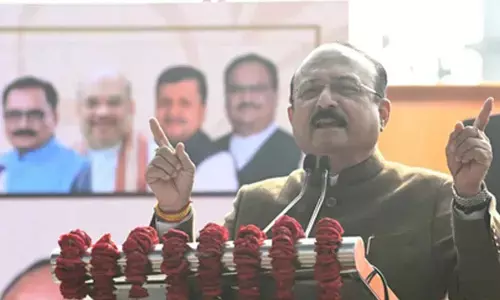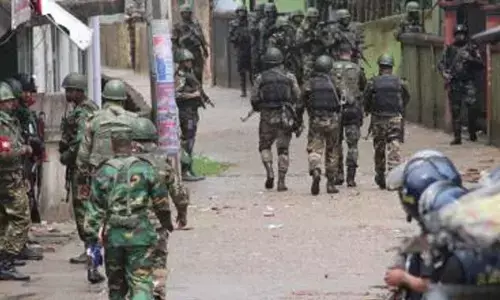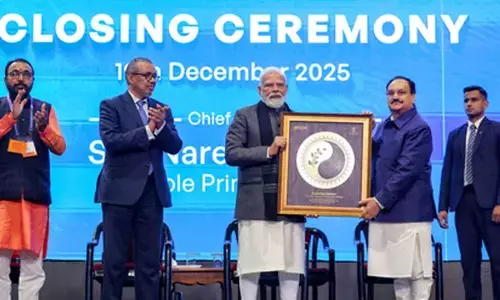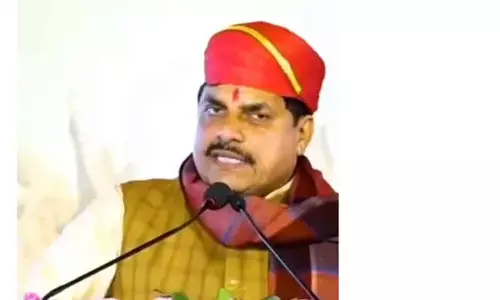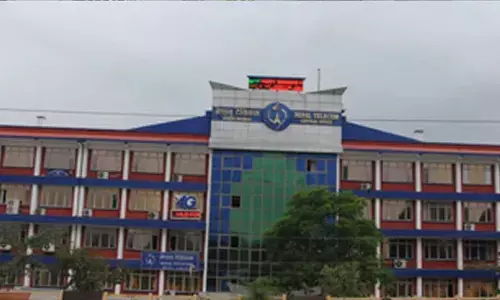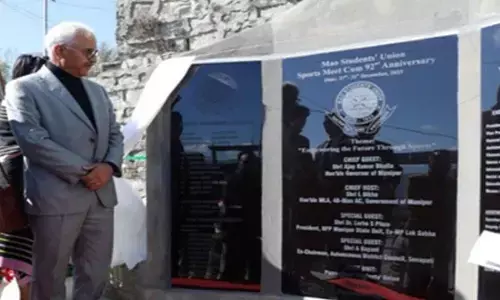All’s well that ends well
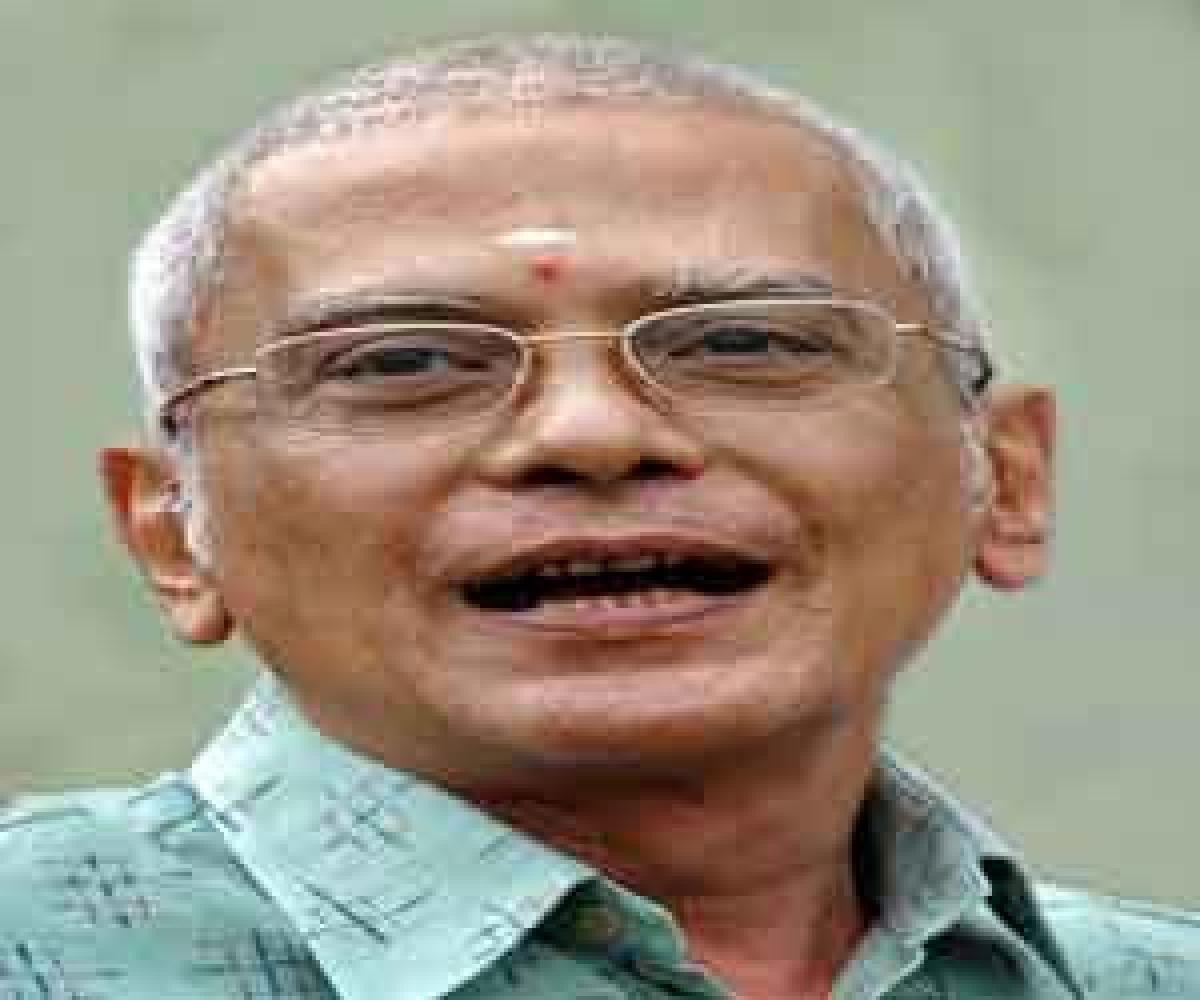
On October 5, 2005 I travelled to Delhi to take over as member NDMA –to begin an exciting tenure in that newly set up outfit. Qualitatively, that period was quite different from the service days. Busy through I was, I proud the freedom and the time to do things which I was too preoccupied to do earlier.
On October 5, 2005 I travelled to Delhi to take over as member NDMA –to begin an exciting tenure in that newly set up outfit. Qualitatively, that period was quite different from the service days. Busy through I was, I proud the freedom and the time to do things which I was too preoccupied to do earlier.
There was the time, for instance, when I went over to T. Subbarami Reddy’s (a Member of Parliament at that time), to meet the yesteryear matinee idol Dev Anand. Usha and I entertained a great deal – putting to good use the opportunity to catch up with old Delhi friends, batchmates and people I had worked with earlier.
Usha also was now free to take up new activities in areas of her interest. She became an active member of the Kitchen Gardens Association of India whose president Sarla Grewal was a contemporary Dr. Durgabai Deshmukh. That connection served to bring them together. Usha thoroughly enjoyed the work.
The NDMA members made for a happy family. Gen N.C. Vij, retired Chief of Army Staff was the Vice-Chairman.There were five of us to begin with, Vij, Dr. M.S. Reddy, K.M. Singh, Professor N.V.C.N. Menon and I. Each of us had, in his own way, brought to the table a considerable amount of experience and specialised knowledge.
It therefore took some effort on our part to start functioning as a team. Needless to say this was the special quality which General Vij possessed in view of his experience in the Army. Very soon he was able to make us work together with extraordinary synergy, complementing each other's strengths.
I have described in the piece entitled "It takes time to do things quickly" how I initially faced a problem in relation to the formulation of the National Disaster Management Policy, but was able to overcome that difficulty. I was under the impression that, after the hectic days of service, the NDMA assignment would be a bit of a sinecure, from sizzle to fizzle as it were. This was not to be.
From the word go, Vij and I had some references to begin with. With the passage of time however, we understood each other and had a comfortable relationship marked by mutual respect and a clear understanding of our respective roles. I travelled to many places in the country, and met the brightest and the best from different walks of life. It was a heady experience, exchanging views with everyone of consequence from the communities of academicians, scientists and captains of industry.
We were given a choice – to be ministers of state of the government of India or to remain retired civil servants. We, all of us, chose to be the former. With the consequent status and rank we were treated as state guests whenever we visited the states.
"Vij enjoyed a good rapport with Dr. Manmohan Singh Prime Minister (PM) who was the chairman ex-officio of NDMA. We therefore had all the support the fledgling organisation needed. The PM was an enlightened head of government, a fine statesman in the truest sense. On one occasion, soon after a meeting of the Authority, he asked a seemingly innocent and simple question – "how well is our country prepared for facing disasters?” What appeared a fairly straightforward query really tested our collective wisdom and experience.
It was only a week later, after toiling day and night and synthesizing our gut feelings, that we were able to come up with some back-of-the-envelope calculations and ball-park numbers to produce a skeletal set of parameters and indicators with attached weightages – an exercise that became the precursor of a rigorous and scientific exercise, more than ten years later, the preparation of a Disaster Preparedness Index for the country.
Those years laid the foundation for me to start a new career. Till today I write and speak on disaster management and participate in various related events. The recent announcement by NDMA of the National Disaster Management Authority Plan created a sense of fulfillment in my mind. After all, the hard work I had put in earlier was finally bearing fruit.
While, no doubt, a good deal of effort has gone into minimizing losses to life and property in the event of disasters, most of the important work lies ahead of us. India as a country is nowhere near achieving the levels of preparedness in many countries notably the USA and Japan.
For instance, an earthquake in 2003, of magnitude 6.7 (on the Richter scale), left 40,000 dead in Bam of Iran, in an earthquake in 1994, of magnitude 6.7 in California of the USA only 60 lives were lost. The call by the Japanees government, in 2011, to the National Disaster Response Force of India to assist in the rescue and relief operations following the earthquake, Tsunami and the Fukushima radiological disaster, was indeed a tribute to the ability of that Force.
In the aftermath of that event the people of Japan exhibited stunning calm, discipline and compassion for the weak and the elderly, the unbelievable restraint the media displayed, the public spiritedness the traders displayed and the remarkable anticipation and coordination on the part of the agencies of the government were all simply amazing. There are many lessons to be learnt from that great nation and its people by countries such as ours.









